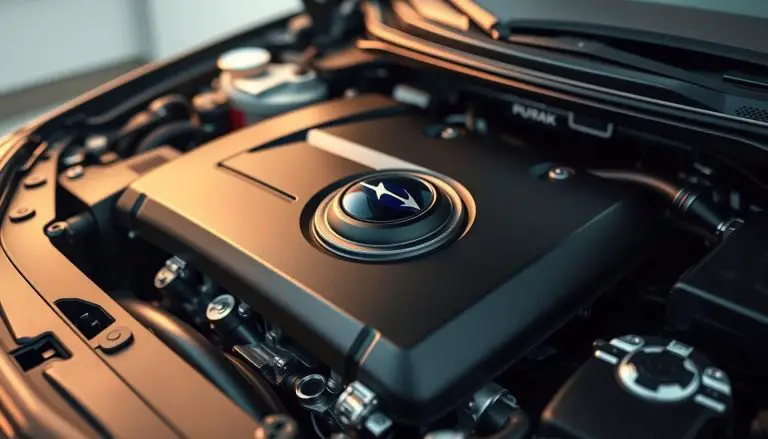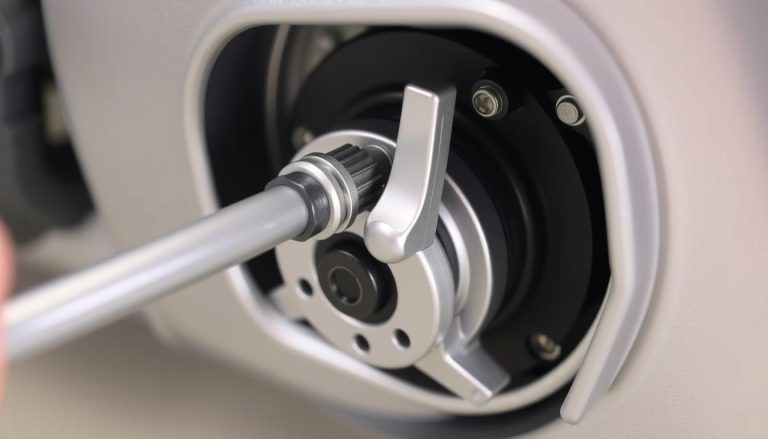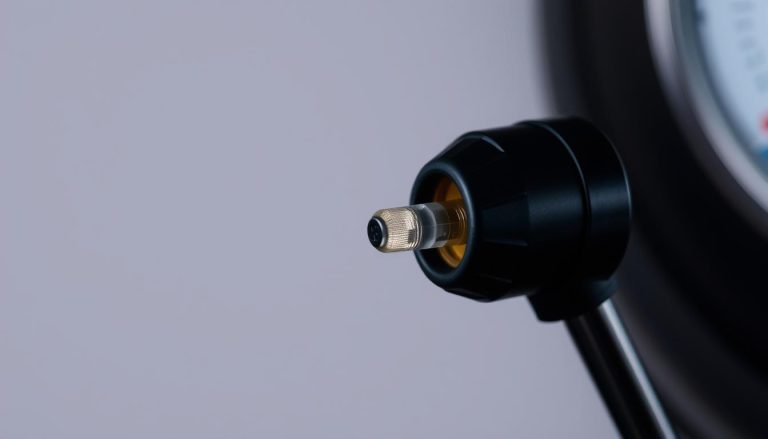Accessing the fuel tank of your Volkswagen Tiguan is a straightforward process once you know the steps involved.
The fuel door release mechanism is designed to provide easy access to the gas tank. Understanding how to operate this mechanism is essential for refueling your vehicle.
In this article, we will guide you through the process of accessing the fuel tank on your Volkswagen Tiguan, ensuring that you can refuel your vehicle with ease.
Key Takeaways
- Understanding the fuel door release mechanism is crucial.
- The process involves simple steps that are easy to follow.
- Proper access to the fuel tank ensures safe refueling.
- Knowing how to open the fuel tank can save you time.
- It’s a straightforward process that requires minimal effort.
Understanding Your Volkswagen Tiguan’s Fuel System
Comprehending the intricacies of your Volkswagen Tiguan’s fuel system is paramount for its upkeep. This system, encompassing the fuel tank, fuel door, and other components, is a sophisticated network. It is designed to supply your vehicle with the necessary fuel.
Fuel Tank Location and Capacity
The fuel tank in your Volkswagen Tiguan is situated at the driver’s side rear quarter panel. This strategic placement enhances both safety and accessibility, a feature common across most Tiguan models.
Driver’s Side Rear Quarter Panel Placement
This positioning facilitates effortless access to the fuel tank during refueling. It exemplifies Volkswagen’s dedication to user convenience in its design.
Standard Capacity Specifications
The fuel tank capacity of the Volkswagen Tiguan varies by model year and configuration. It generally ranges from 15.3 to 16.6 gallons, contingent upon the specific model and drivetrain.
| Model Year | Fuel Tank Capacity (gallons) |
|---|---|
| 2017-2020 | 15.3 |
| 2021-Present | 16.6 |
Fuel Door Design Features
The fuel door of your Volkswagen Tiguan is crafted with both functionality and security in mind. It incorporates a push-to-open mechanism, facilitating straightforward access to the fuel tank.
Push-to-Open Mechanism
This mechanism is engineered to offer a seamless and convenient refueling experience. Simply apply pressure to the fuel door to open it.
Locking System Integration
The fuel door is seamlessly integrated with the vehicle’s locking system, ensuring its security when not in use. This integration adds a layer of security to your vehicle’s fuel system.
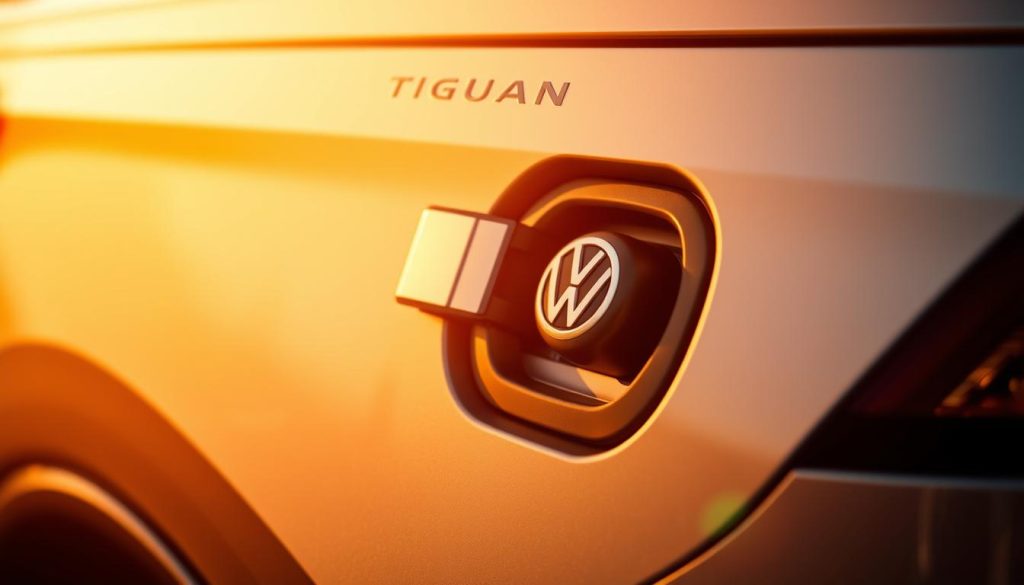
Preparing to Open the Gas Tank on Your Volkswagen Tiguan
Initiating the process of opening the gas tank on your Volkswagen Tiguan necessitates a thorough understanding of the requisite safety precautions and the availability of the required tools.
Safety Precautions
Adherence to certain guidelines is imperative prior to commencing the task of opening the gas tank. These measures are designed to safeguard your well-being.
- Ensure the engine is turned off and the parking brake is engaged.
- Eliminate the risk of static electricity by either touching a metal surface or donning an anti-static strap.
Engine Off Requirements
It is paramount to extinguish the engine’s flame before proceeding to open the gas tank. This precautionary measure is indispensable to prevent any unforeseen ignition incidents.
Static Electricity Prevention
Static electricity poses a considerable hazard when interacting with fuel. To counteract this risk, it is advisable to either touch a metal object or utilize an anti-static strap to neutralize static charges from your body.
Required Tools and Materials
Acquiring the appropriate tools and materials is crucial for a seamless refueling process.
Standard Equipment
The standard apparatus for opening the gas tank on your Volkswagen Tiguan includes the fuel door release button located within the vehicle.
Emergency Override Tools
In the event of an emergency, knowledge of the manual override options for your Volkswagen Tiguan is beneficial. These tools serve as a backup to access the fuel door in the event of a failure of the standard mechanism.
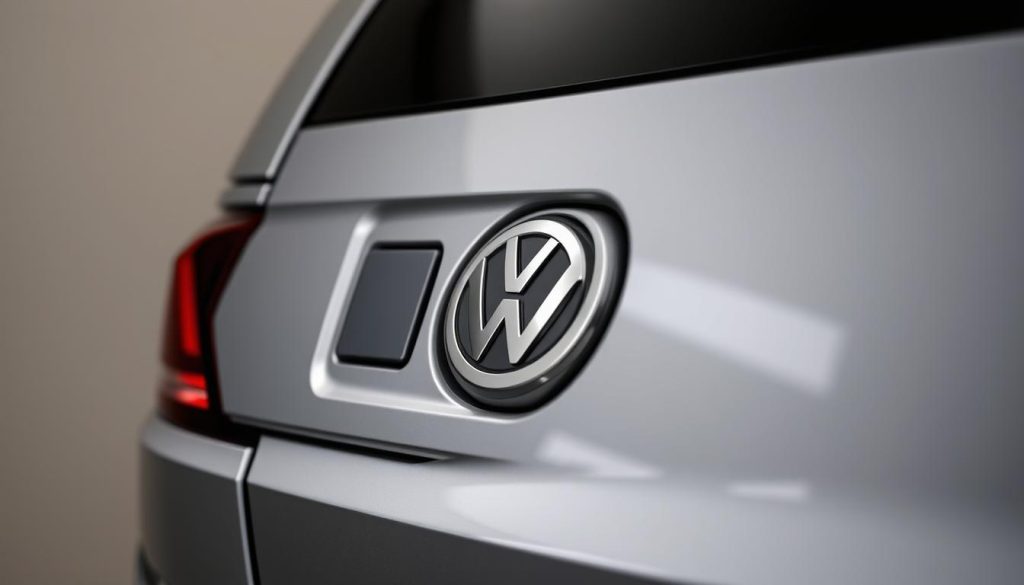
Standard Method to Open Gas Tank on Volkswagen Tiguan
Acquiring proficiency in the procedure to access the gas tank of your Volkswagen Tiguan is paramount for a seamless refueling process. This method encompasses a sequence of uncomplicated maneuvers, crafted to guarantee both the safety and the convenience of accessing the fuel reservoir.
Step-by-Step Instructions
To initiate the process of opening the gas tank, adhere to the following directives:
Unlocking the Vehicle
Commence by verifying that your Volkswagen Tiguan is in an unlocked state. This can be achieved through the utilization of the key fob or the central locking mechanism within the vehicle. The fuel door release mechanism is electronically controlled, necessitating the vehicle to be in an unlocked condition.
Pressing the Fuel Door
Subsequently, locate the fuel door situated on the driver’s side of the vehicle. Gently press the rear edge of the fuel door to facilitate its opening. Upon activation, you will perceive a slight auditory confirmation.
Removing the Fuel Cap
Upon the fuel door’s opening, the fuel cap becomes visible. To detach it, turn it counterclockwise until it reaches a stopping point, then remove it entirely.
Visual Indicators and Feedback
The Volkswagen Tiguan is equipped with various visual cues and feedback mechanisms to affirm the fuel door’s status and readiness for refueling.
Door Release Confirmation
Upon pressing the fuel door, it will slightly open, signifying the activation of the release mechanism.
Cap Rotation Guidelines
The fuel cap is intended to be rotated counterclockwise for removal. A distinct clicking sound will be audible as you turn it, culminating in a cessation when it is prepared to be removed.
Opening the Fuel Door in Different Tiguan Model Years
The procedure for accessing the fuel door in Volkswagen Tiguan models exhibits considerable variability across different model years. It is imperative to ascertain the precise model year of your vehicle to navigate this process effectively.
First Generation Tiguan (2007-2016)
The initial iteration of the Volkswagen Tiguan, spanning from 2007 to 2016, encompasses both the original and facelift models. Each sub-generation presents distinct characteristics in the design of the fuel door.
Original Models (2007-2011)
The fuel door release mechanism in the original Tiguan models, produced from 2007 to 2011, is typically activated by a button located within the vehicle.
Facelift Models (2012-2016)
The facelift models, manufactured from 2012 to 2016, maintain a similar release mechanism but with enhancements in design and functionality. These refinements may include adjustments to the location of the release button or the door’s spring mechanism.
Second Generation Tiguan (2017-Present)
The second generation of the Tiguan, introduced in 2017, has introduced substantial improvements to the fuel door mechanism. These updates apply to both standard models and the Tiguan Allspace or long wheelbase variants.
Standard Models
Standard models of the second generation Tiguan feature an advanced fuel door release system. This system may incorporate electronic controls that are integrated with the vehicle’s infotainment system.
Tiguan Allspace/Long Wheelbase Variants
The Tiguan Allspace, distinguished by its extended wheelbase, offers enhanced interior space. It may exhibit minor variations in the fuel door mechanism compared to standard models, potentially influencing the opening procedure.
Using the Fuel Door Release Button Inside the Vehicle
The operation of the fuel door on your Volkswagen Tiguan is remarkably simple, facilitated by the internal release button. This innovation ensures effortless access to the fuel tank, enhancing the convenience of refueling.
Locating the Release Button
The fuel door release button in your Volkswagen Tiguan is positioned in one of two typical locations: the driver’s door panel or the dashboard/console area.
Driver’s Door Panel Location
In numerous Volkswagen Tiguan models, the fuel door release button is located on the driver’s door panel. To identify it:
- Open the driver’s door and inspect the lower part of the door panel.
- The button is typically denoted by a symbol representing a car with a fuel door open.
Dashboard or Console Variations
Some models feature the release button on the dashboard or center console. If it’s not found on the driver’s door panel:
- Examine the lower part of the dashboard on the driver’s side.
- Look for a button on the center console, often near the gearshift or in a storage compartment.
Proper Operation Technique
Once the fuel door release button is identified, its operation is straightforward. Follow these steps:
Button Press Duration
To release the fuel door, press the button firmly. The duration of the press may vary slightly depending on the model year of your Tiguan:
- For most models, a brief press is sufficient.
- Some earlier models might require a slightly longer press.
Confirmation Indicators
After pressing the release button, you may hear a clicking sound or see the fuel door pop open slightly. These are confirmation indicators that the mechanism has been activated successfully.
Tip: If the fuel door doesn’t open after pressing the release button, check to ensure the vehicle is unlocked and try again.
Digital Features for Fuel Door Operation
Recent iterations of the Volkswagen Tiguan are distinguished by the integration of advanced digital functionalities, notably simplifying the act of opening the fuel door. These innovations significantly elevate the user experience, offering both convenience and enhanced efficiency.
Infotainment System Controls
The Volkswagen Tiguan’s infotainment system is characterized by its intuitive controls for the fuel door operation. The system’s design ensures a seamless navigation experience, empowering drivers to effortlessly access a plethora of features.
MIB System Navigation
The MIB (Modular Infotainment Matrix) system within the Volkswagen Tiguan facilitates effortless navigation. To unlock the fuel door release functionality:
- Navigate to the “Vehicle” menu
- Select “Vehicle Settings”
- Choose “Fuel Door Release”
Digital Cockpit Integration
The Digital Cockpit, a hallmark of newer Tiguan models, seamlessly integrates the fuel door release feature, thus enhancing the overall driving experience. This integration enables:
- Uncomplicated access to fuel door controls
- Customizable settings for a tailored convenience experience
Volkswagen Car-Net App Features
The Volkswagen Car-Net app extends remote access to a multitude of vehicle functionalities, including the fuel door release. This capability is invaluable for enhancing convenience.
Remote Fuel Door Release
Utilizing the Car-Net app, owners can effortlessly release the fuel door remotely, facilitating a more convenient refueling process. To activate this feature:
“Open the Car-Net app, navigate to the ‘Vehicle’ section, and select ‘Fuel Door Release’.”
Setup and Configuration
To configure the remote fuel door release functionality, adhere to the following steps:
| Step | Description |
|---|---|
| 1 | Download and install the Car-Net app |
| 2 | Log in to your Volkswagen account |
| 3 | Select your Tiguan model and navigate to “Vehicle Settings” |
| 4 | Enable “Remote Fuel Door Release” |
Manual Override Methods for Emergency Situations
In unforeseen circumstances where the fuel door’s normal operation is impeded, the Volkswagen Tiguan’s manual override feature emerges as a critical lifeline. This mechanism is engineered to facilitate access to the fuel tank, a necessity in emergency scenarios or when the primary system fails.
Accessing the Emergency Release Mechanism
To initiate the emergency release process, a precise sequence must be followed, commencing with the exploration of the vehicle’s trunk compartment.
Trunk Panel Removal
The initial phase involves the removal of the trunk panel. This necessitates a gentle yet firm action to disengage the panel from the trunk’s interior. It is imperative to exercise caution to prevent any damage to the panel or the adjacent trim.
Locating the Release Cable
Post-panel removal, the next step is to identify the release cable. Positioned adjacent to the fuel door mechanism, this cable’s correct identification is paramount to avoid confusion with other components.
Using the Manual Override Cable
Upon the cable’s identification, the subsequent step involves its utilization to manually open the fuel door.
Proper Pull Direction and Force
The activation of the manual override necessitates the cable’s pull in a direction specified within the vehicle’s manual or on a label proximal to the cable. It is crucial to apply the appropriate force to prevent damage to the mechanism.
Resetting After Emergency Use
Following the manual override’s utilization, resetting the mechanism is imperative. This may involve reattaching the release cable or ensuring its proper positioning. For detailed instructions on resetting the fuel door release mechanism, refer to your vehicle’s manual.
By adhering to these guidelines, Volkswagen Tiguan proprietors can proficiently employ the manual override feature in emergency contexts. This ensures the vehicle’s refueling capability, even when the conventional release mechanism is inoperable.
Troubleshooting Common Gas Tank Opening Issues
Grasping the intricacies of troubleshooting prevalent gas tank opening malfunctions can significantly expedite the refueling process of your Volkswagen Tiguan, thus averting unnecessary inconvenience.
Frozen or Stuck Fuel Door
The predicament of a frozen or immobile fuel door, exacerbated by the rigors of winter, can prove to be a significant source of frustration.
Winter Weather Solutions
In the face of subzero temperatures, the application of a de-icer spray or the judicious use of heat to the fuel door’s vicinity can facilitate its thawing. It is imperative to eschew the application of undue force, lest it compromise the integrity of the door.
Debris Removal Techniques
An examination of the fuel door’s vicinity for any obstructions or debris is advisable. A gentle cleansing with a soft-bristled brush or cloth is recommended to ensure unimpeded functionality.
Malfunctioning Release Mechanism
Should the fuel door’s release mechanism exhibit signs of malfunction, a more in-depth investigation is warranted.
Electrical Component Diagnosis
An assessment of the electrical components integral to the fuel door’s release, including fuses and wiring, is crucial. A blown fuse or compromised wiring could underlie the malfunction.
Mechanical Failure Identification
In cases where the issue is mechanical in nature, a thorough inspection of the release cable and latch for any evidence of wear or damage is essential. The application of lubrication to the mechanism may prove efficacious in rectifying the problem.
Electrical System Problems
Electrical malfunctions can also impede the functionality of the gas tank opening mechanism.
Fuse Inspection and Replacement
An examination of the fuse associated with the fuel door’s release is imperative. The replacement of a blown fuse may serve to rectify the issue at hand.
Wiring Harness Checks
An inspection of the wiring harness for any signs of damage or corrosion is advisable. Repairs or replacements of damaged wiring can effectively address the problem.
| Issue | Possible Cause | Solution |
|---|---|---|
| Frozen Fuel Door | Cold Weather | De-icer spray or gentle heating |
| Malfunctioning Release | Electrical or Mechanical Failure | Check fuses, wiring, and lubricate mechanism |
| Electrical System Issues | Blown Fuse or Damaged Wiring | Replace fuse or repair wiring |
Maintaining Your Tiguan’s Fuel Door System
The upkeep of your Volkswagen Tiguan’s fuel door system is paramount for its durability. A meticulously maintained fuel door system guarantees unimpeded functionality and averts potential malfunctions that could escalate into expensive repairs.
Regular Cleaning and Lubrication
Consistent cleaning and lubrication are indispensable for the fuel door system’s upkeep. Accumulation of dirt and debris can induce mechanical failure or erratic behavior.
Recommended Products
Employ a silicone-based lubricant to maintain the fluidity of the fuel door’s hinges and latch. Opt for a soft cloth and a diluted soap solution for cleaning purposes.
Application Methods
Apply lubricant to the hinges and latch, then remove any surplus with a clean cloth. For cleaning, delicately wipe the fuel door and its environs with a dampened soft cloth.
Preventative Maintenance Tips
Proactive maintenance can substantially prolong the life of your Tiguan’s fuel door system. Regular assessments can uncover potential issues before they escalate.
Seasonal Care Routines
In winter, ensure the fuel door remains ice-free and snow-free. During summer, maintain the area’s cleanliness and dryness to avert corrosion.
Early Warning Signs of Issues
Be vigilant for any unusual noises or resistance when opening the fuel door. These symptoms may herald an impending problem.
Adherence to these maintenance guidelines will guarantee the long-term efficiency of your Volkswagen Tiguan’s fuel door system.
Refueling Best Practices for Volkswagen Tiguan
To optimize your Volkswagen Tiguan’s performance, it is imperative to grasp the nuances of refueling. Refueling transcends mere fuel replenishment; it encompasses a series of practices aimed at preserving your vehicle’s operational efficacy and longevity.
Recommended Fuel Types
The selection of fuel for your Volkswagen Tiguan is paramount for its operational excellence. Always refer to your owner’s manual for the stipulated fuel type.
Octane Requirements
For gasoline-powered variants, adherence to the correct octane rating is indispensable. The recommended octane rating for your Tiguan is explicitly outlined in the owner’s manual. Typically, Volkswagen Tiguan models necessitate regular unleaded gasoline with an octane rating of 87.
Diesel vs. Gasoline Models
Distinguishing between diesel and gasoline variants is critical during refueling. Diesel models require diesel fuel, and the utilization of gasoline can precipitate severe engine damage.
Proper Refueling Technique
The methodology employed during refueling significantly influences your vehicle’s efficiency. Insert the nozzle fully into the fuel tank to preclude spills and facilitate a seamless fuel flow.
Nozzle Insertion Depth
Ensure the nozzle is fully embedded within the fuel tank to avert fuel splashing back and to guarantee the fuel pump’s correct shutdown.
Automatic Shutoff Response
Be attentive to the automatic shutoff mechanism of the fuel pump. This feature signals when your tank is fully replenished.
Avoiding Common Mistakes
Steering clear of common refueling errors can avert potential complications. Don’t overfill your tank, as this can precipitate fuel spills and compromise your vehicle’s evaporative emission control system.
Overfilling Prevention
Discontinue refueling once the pump automatically shuts off. Continuing to add fuel can result in overfilling.
Fuel Door Closure Confirmation
Post-refueling, verify that the fuel door is closed properly to avert security and safety vulnerabilities associated with an open fuel door.
When to Seek Professional Assistance
Recurring problems with the fuel door or gas tank access on your Volkswagen Tiguan may necessitate a visit to a qualified service center. If you’re experiencing difficulties that you’re unable to resolve on your own, it’s crucial to recognize when professional assistance is required to ensure your vehicle’s optimal performance and safety.
Signs of Serious Fuel System Issues
It’s essential to be aware of the indicators that suggest serious fuel system problems. These can include persistent access issues or signs of fuel leakage.
Persistent Access Problems
If you find that the fuel door is consistently difficult to open or remains stuck, it may indicate a mechanical issue that requires professional attention. Repeated problems with the fuel door release mechanism can be a sign of a more complex issue within the fuel system.
Fuel Leakage Indicators
Fuel leakage is a serious issue that poses safety risks. Signs of fuel leakage include the smell of gasoline, visible fuel drips, or a consistently low fuel level without explanation. If you notice any of these indicators, seek professional help immediately.
Finding Qualified Volkswagen Service Centers
When you decide to seek professional assistance, finding the right service center is crucial. You have the option to choose between a dealership and an independent shop, each with its considerations.
Dealer vs. Independent Shop Considerations
Dealerships offer specialized knowledge and genuine parts but may come at a higher cost. Independent shops can provide competitive pricing and personalized service but ensure they have experience with Volkswagen models.
| Service Center Type | Advantages | Considerations |
|---|---|---|
| Dealership | Specialized knowledge, genuine parts | Higher cost |
| Independent Shop | Competitive pricing, personalized service | Ensure experience with Volkswagen |
Service Documentation Importance
Regardless of the service center you choose, maintaining detailed service documentation is vital. It helps in tracking the history of repairs and maintenance, which can be beneficial for future reference and when selling the vehicle.
Conclusion
Unlocking the gas tank on your Volkswagen Tiguan is a task that, once mastered, becomes second nature. This comprehensive guide has dissected the myriad ways to open the fuel door, from the conventional approach to the utilization of digital interfaces and manual override strategies.
By mastering the location and function of the fuel door release button within the vehicle, coupled with the proficiency in operating the infotainment system, you can achieve effortless access to the gas tank. The inclusion of manual override techniques serves as a safeguard against unforeseen circumstances.
Adherence to a routine maintenance regimen for the fuel door system, encompassing cleaning and lubrication, is paramount in averting malfunctions and ensuring its optimal performance. Should any malfunctions arise, the ability to troubleshoot common issues or seek expert advice from a certified Volkswagen service center is invaluable.
Armed with the knowledge from this exhaustive guide, you are now poised to navigate the process of accessing the gas tank on your Volkswagen Tiguan with unparalleled ease. This capability promises a seamless refueling experience, eliminating the potential for inconvenience.
FAQ
How do I open the gas tank on my Volkswagen Tiguan?
To access the gas tank, first ensure your vehicle is in an unlocked state. Subsequently, locate the fuel door release button on either the driver’s door panel or the dashboard/console. Upon activation, the fuel door will open, granting you access to the fuel cap.
What are the recommended fuel types for my Volkswagen Tiguan?
The fuel type recommended for your Volkswagen Tiguan varies by engine model. Gasoline models necessitate premium unleaded fuel with an octane rating of 91 or higher. Diesel models, on the other hand, require fuel that meets the VW 505 01 or VW 507 00 specification.
Why is my fuel door stuck or frozen?
A stuck or frozen fuel door often results from ice or debris accumulation. Employ a hair dryer or de-icer spray to gently warm the area. For debris, utilize a soft brush or cloth to carefully remove it.
How do I manually override the fuel door release mechanism?
To manually override the fuel door release mechanism, access the trunk panel. Locate the release cable and pull it gently to release the fuel door. Post-use, ensure to reset the mechanism.
What should I do if I experience persistent issues with accessing my gas tank?
Encountering persistent access issues warrants a thorough examination of the electrical components, fuses, and wiring harness for any damage or malfunction. If the problem persists, seek assistance from a qualified Volkswagen service center.
How do I maintain my Tiguan’s fuel door system?
Regular maintenance of the fuel door system involves cleaning and lubricating the hinges and latch with recommended products. Seasonal care routines are essential to prevent issues and to detect early warning signs of potential problems.
Can I use the Volkswagen Car-Net app to release the fuel door remotely?
Yes, if your Tiguan is equipped with the Car-Net app and remote fuel door release feature, you can release the fuel door remotely. Ensure the app is updated to the latest version and follow the setup and configuration instructions provided.
What are the best practices for refueling my Volkswagen Tiguan?
Opt for the recommended fuel type and ensure the nozzle is inserted to the correct depth. Avoid overfilling the tank. After refueling, confirm the fuel door is securely closed to prevent potential issues.
How do I troubleshoot electrical system problems related to the fuel door?
Begin by inspecting the fuses, wiring harness, and electrical components for any signs of damage or malfunction. If unsure or in need of assistance, consult a qualified Volkswagen service center.
When should I seek professional assistance for fuel system issues?
Professional assistance is necessary if you encounter persistent access problems, fuel leakage, or other signs of serious fuel system malfunctions. A qualified Volkswagen service center should be consulted for diagnosis and repair.
